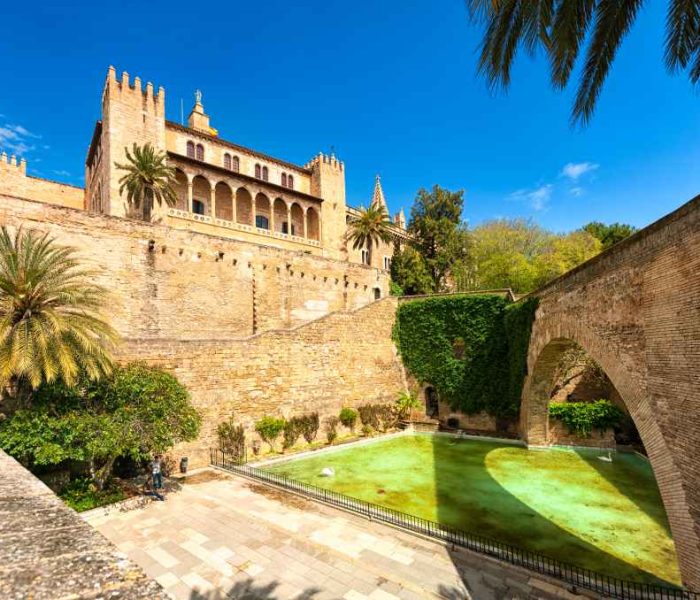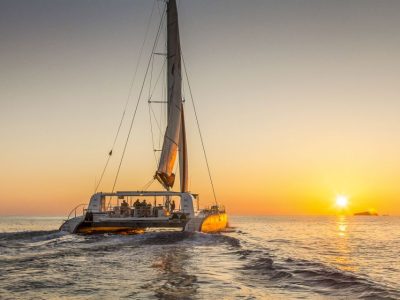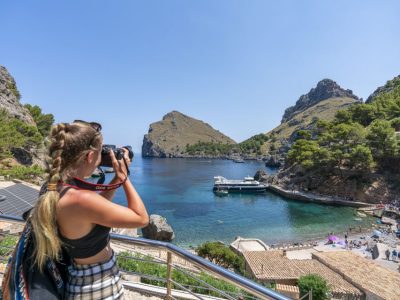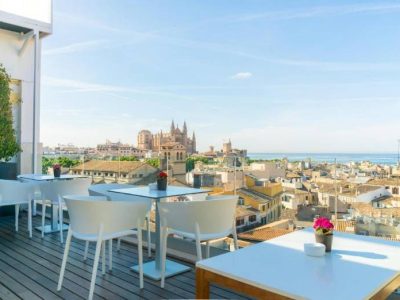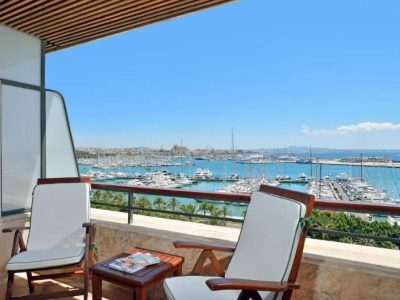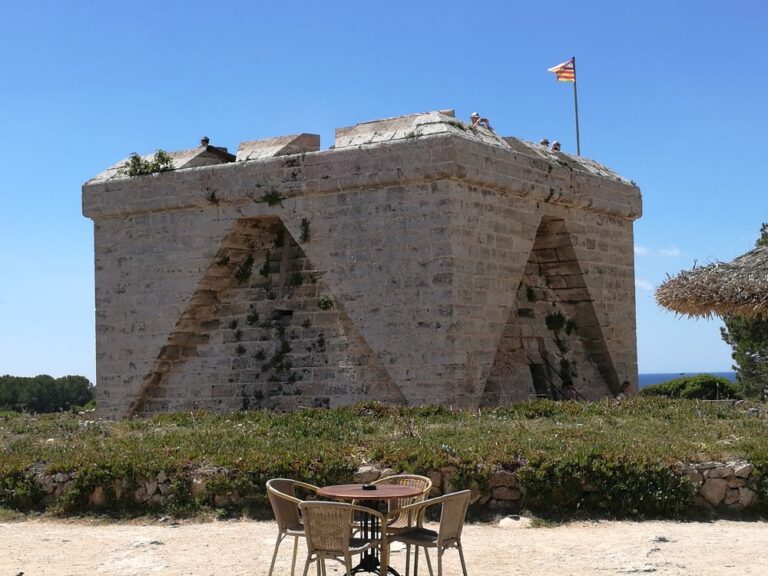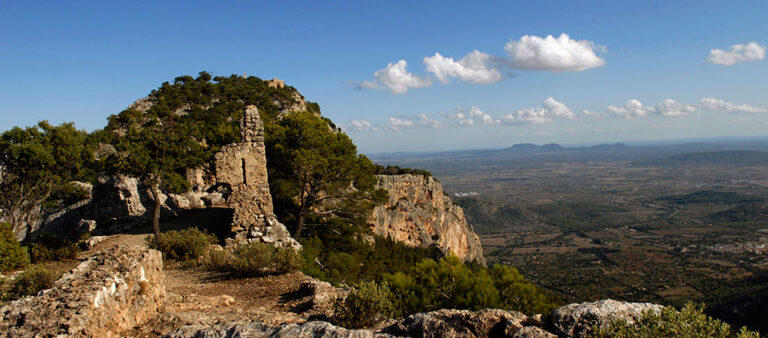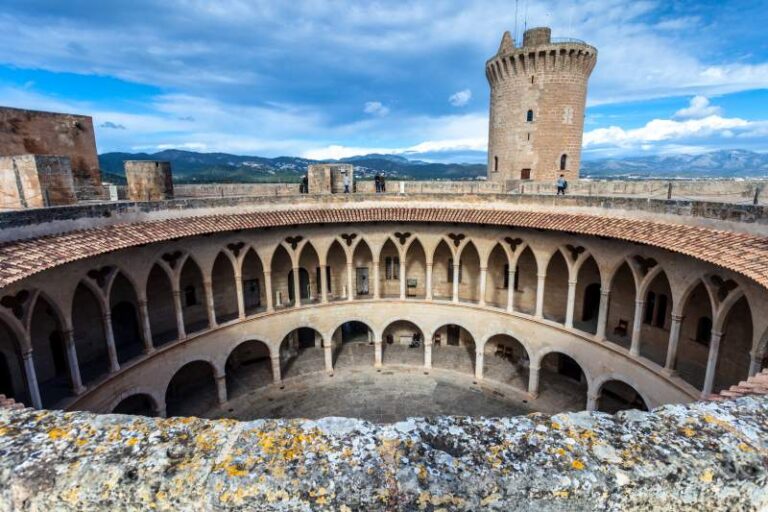In Arabic, Almudaina means citadel, or walled enclosure, and at the time of construction the palace was part of a walled enclosure of the new city. There are theories that the Almudaina was built on a site of an ancient Roman fortress, as Palma was originally by the Romans.
Although most of the current palace is a result of modifications, parts of the original construction can still be seen in the highest tower, which is called “Angel’s Tower”. On top of the tower, which original name is the Tower of Homage, you can see a bronze sculpture of archangel Gabriel.
Following the Aragonese-Catalan conquest of the island, in 1229, most of the palace was renovated between 1305 to 1313 according to the wishes of king Jaume II, whom transformed the Agel’s Tower to his personal quarters. The Almoravid Alcázar was transformed into a Christian Palace, taking its current form, although conserving the fundamental structures of the Muslim fortress. Jaume II also enlarged it and adapted it according to the prevailing Gothic style of the time.
In 1337, the Mirador chapel was added to the now royal palace.
One of the Almudaina palace’s most significant characteristics is the southern facade facing the waterfront of Palma, with its square side towers and Gothic arches. On this side of the palace you will also find the main courtyard called “the king’s courtyard”, adorned with many beautiful Gothic remains, as well as a sphinx fountain. It also features the portal to the royal chapel of Santa Anna, which retains a tympanum with 14th-century sculptures.
Of particular interest in the Santa Anna chapel is that it more or less is a reproduction of the chapel of the holy cross of Perpignan (the place where the kings of Mallorca lived and ruled from). The altarpiece is the work of famous Catalan painter Ramon Destorrents.
The Almudaina palace you are looking at today, which is of Roman origin, is the result of the many modifications that lasted until 1343, under the reign of the last Mallorcan king, Jaume III.
The first floor was added upon request of king Carlos I of Spain, in the first half of the 16th century. On the first floor, the rooms of the King and Queen await us, as well as the Royal Dining Room, with ostentatious decoration and furniture that stand out against the sober profile of the walls.
One of the latest and most important restorations of the Almudaina palace was that of the southern facade, which was carried out by architect Gaspar Bennazar, in the beginning of the 20th century. Bennazar was also responsible for the beautiful Paseo Maritimo, the former Born cenema (now Zara store) and the Casa Caubet across from it.
Inside, rich tapestries, furniture and majestic paintings depicting different kings and historical episodes awaits you, a truly interesting collection of items and artifacts.
Today, the Almudaina palace is mainly used for political purposes, events and tourism. When the royal family of Spain visit Mallorca, they use Almudaina for meetings, while residing at the Marivent palace near Cala Major.


